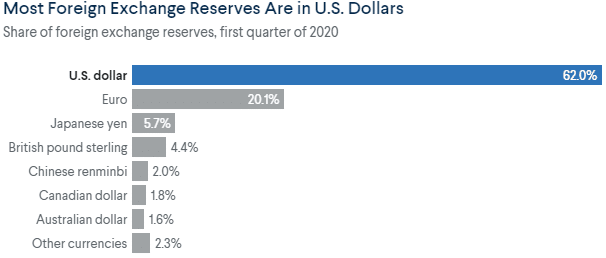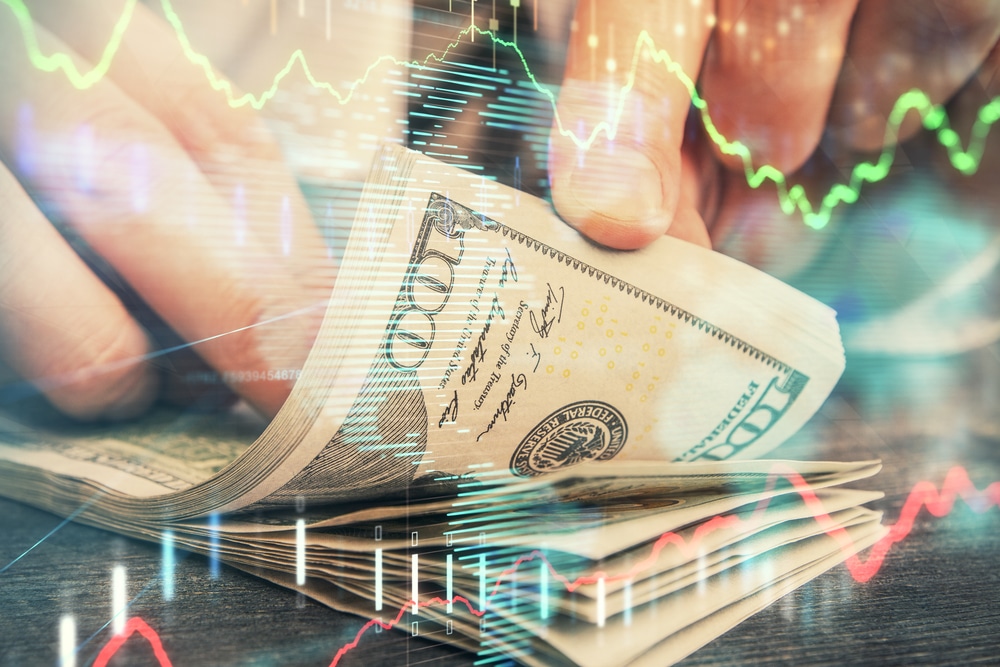Triffin Dilemma: What Is It?
The Triffin dilemma is an argument fronted by Robert Triffin in 1960. Triffin was an economist who the US Congress had summoned to testify about the role of the US dollar in the global economy. During this period, the dollar was becoming unpopular, especially due to problems arising from its convertibility to gold.
In the 60s, the global economy was expanding fast, which increased the demand for liquidity – liquidity underwritten by the US dollar. Underwriting the liquidity was incurring a huge and increasingly widening balance of payments (BoP) on the part of the US. Sensing trouble ahead, the US government started probing for possible solutions.
In his testimony, Triffin outlined two possible courses of action for the US. On the one hand, the US stopped expanding BoP by cutting down the supply of dollars to the world economy. However, this action would turn off the spigot that fed the reserves of central banks. The resulting liquidity crunch would plunge the world economy into recession and subsequent instability.

On the other hand, the US could let the BoP deficits run. While more dollars would fuel global economic growth, the resulting dollar glut would undermine the greenback’s value. A lack of confidence in the dollar might erode its status as the global reserve currency, hence breaking down the existing Bretton Woods exchange rate system. Once again, the world would find itself on an unstable patch.
The Dilemma Mostly Affects Reserve Currencies
From Triffin’s perspective, this dilemma affects all reserve currencies. But why? Well, you are better off if you understood the nature of a reserve currency and the policy options that domestic central banks have to contend with. Let us digress for a moment.
A reserve currency is the currency of another country that a central bank holds reserves for formal exchange. Various reasons drive the need for a central bank to hold a reserve currency. They include to service debt, support monetary policy in times of economic crisis, pay for imports, and regulate the domestic currency’s value.
The most critical defining aspect of a reserve currency is liquidity. Given the reasons listed above, a central bank would want to access its reserves at a moment’s notice. This means the host country’s financial markets must be sufficiently open and large enough to absorb high demand. Perhaps this is the reason why the US dollar is the world’s most preferred reserve currency. Others are the euro, the Chinese renminbi, the Australian and Canadian dollar, the Japanese yen, and the Swiss franc.

Why do economies with reserve currencies experience the Triffin dilemma? Well, as you have so far seen, a reserve currency caters to both domestic and international demand. As such, a central bank that controls a reserve currency has to balance between these needs. For instance, the US Fed has to feed the global demand for dollars while working hard to prevent inflation at home.
How Does the Dilemma Impact Currency Values?
The Triffin dilemma offers an interesting view of the fine line that central banks have to tread when their currencies provide reserve services for other central banks. Such a central bank performs a twofold duty, and each one must be to a satisfactory level, or problems will arise.
Since the reserve currency supply affects the rate of the world’s economic growth, the issuing country has little sovereignty over its currency. For instance, the US Fed institutes’ monetary policies are of interest to tens of central banks across the globe. As such, the Fed has to consider the global impact of a policy before enactment.
Therefore, the value of the US dollar depends not only on domestic economic conditions but also on conditions in the international economy. In the late 60s, the Bretton Woods exchange rate system came under immense pressure when the US could not cover all the dollars in circulation. Demand for the greenback has outstripped the available gold reserves. Consequently, President Nixon had no choice but to decouple the dollar from gold-convertibility.
The termination of the gold standard was devastating for stability in global finance. Suddenly, there was no center to hold the financial system in place. Instead, central banks had to adopt a floating exchange rate system. The shift opened a floodgate of opportunities for rogue central banks to manipulate the forex market, leading to the debt crisis of the 80s and 90s.
Is a new international monetary system possible?
A 2020 report by a research department of the US Congress found that the US dollar faces mounting challenges to its status as the world’s reserve currency. The report noted that, among other things, the rise of China as a global economic power and alternative currencies such as Bitcoin pose a threat to the dollar primacy. Additionally, the US government’s excessive use of sanctions to achieve certain ends is deteriorating confidence in the dollar.
Does this, then, imply that it is time for a new international monetary system? Is it even possible? To build an international monetary system around another currency, say the Chinese yuan, is not an easy task. One must reflect on the circumstances that led to the dollar’s rise and compare them to the current situation.
The yuan suffers the effects of tough controls on the capital flow between China and the international market, making the currency less liquid. As such, a new system around the yuan is not possible soon. On the other hand, cryptocurrencies experience too high volatility to inspire enough confidence in the market.
Conclusion
Reserve currency status confers special privileges to the host country. For example, the US can impose sanctions on its enemies successfully. Also, the US can issue bonds at ridiculously low rates. However, the exorbitant privilege comes at a cost. For example, the US cannot reduce its BoP deficits nor make its exports competitive in the international market.
